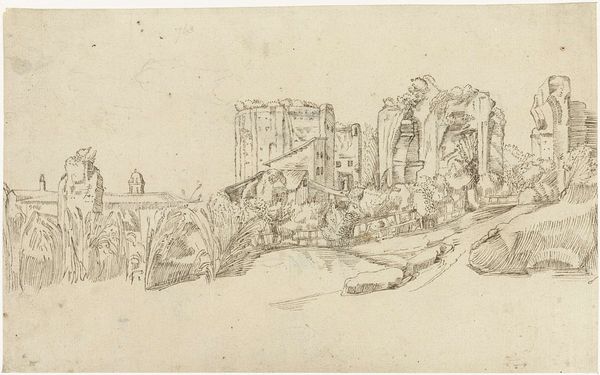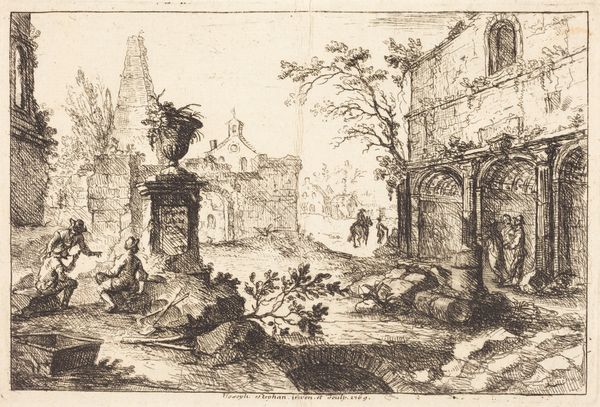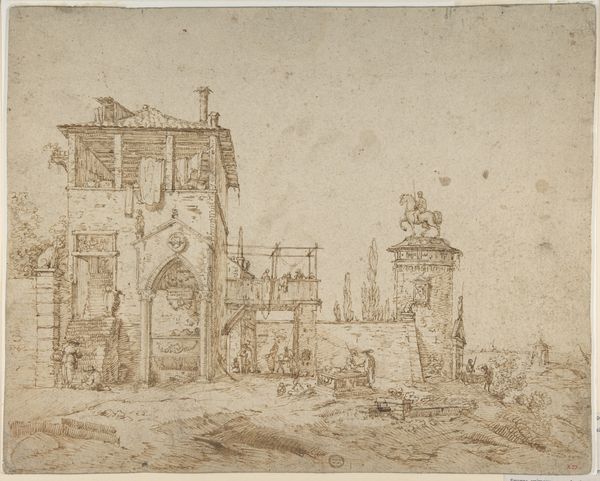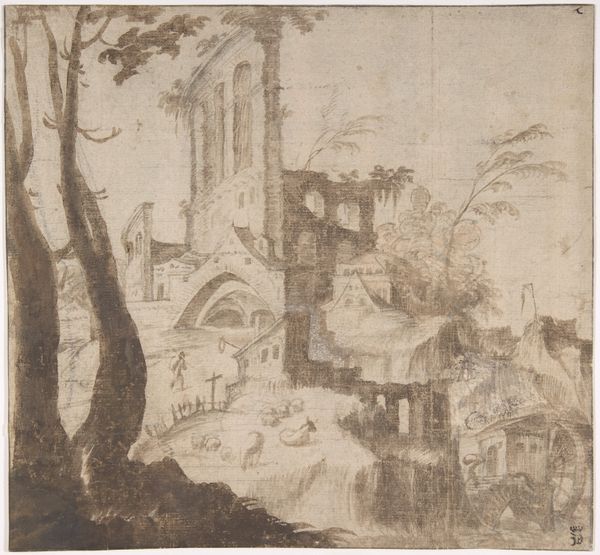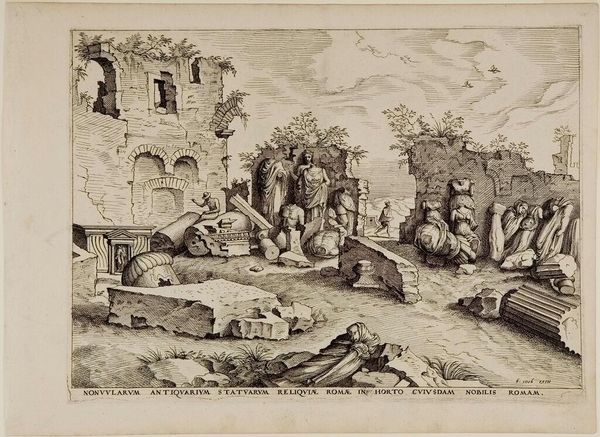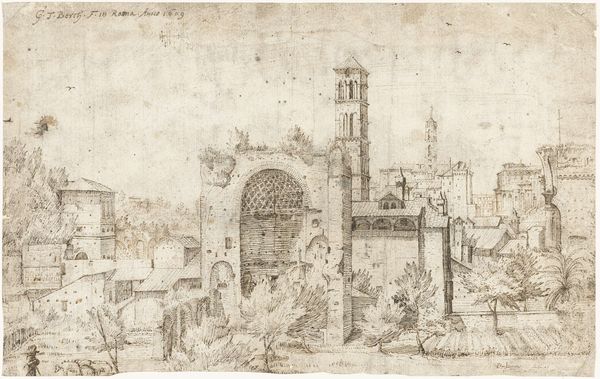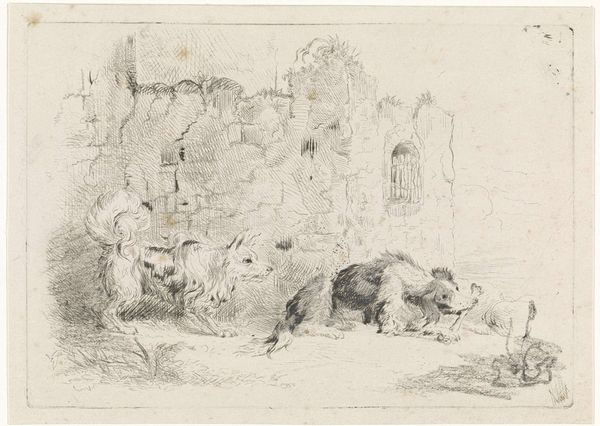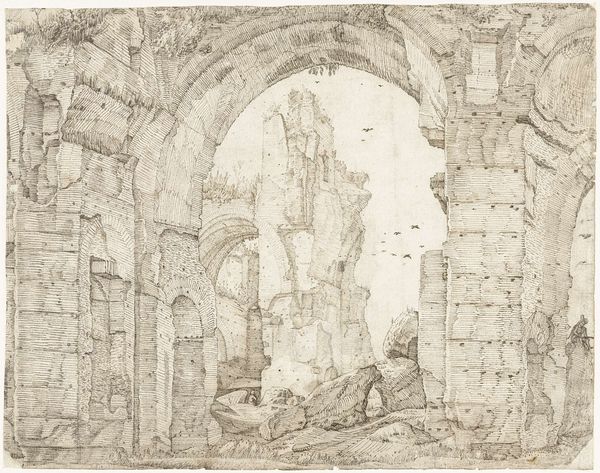
Ruïnes van de Basiliek van Maxentius en Constantijn, Rome c. 1611 - 1675
0:00
0:00
drawing, ink, pen
#
drawing
#
pen sketch
#
pencil sketch
#
landscape
#
romanesque
#
ink
#
pen
#
cityscape
Dimensions: height 155 mm, width 276 mm
Copyright: Rijks Museum: Open Domain
Moses ter Borch made this pen and brown ink drawing of the ruins of the Basilica of Maxentius and Constantine in Rome sometime in the 17th century. In the Dutch Golden Age, Rome represented the epitome of classical antiquity and a history that shaped social and political institutions. The drawing style here invites us to think about the culture of the time, the tension between the glorification of the past and the decay of present. The monumental ruins, rendered with precise detail, serve as a reminder of human accomplishments but also the transience of power. The Dutch Republic's own struggle for independence and its burgeoning mercantile empire created an environment in which reflections on the rise and fall of civilizations had a particular resonance. To truly understand this work, one would delve into the historical context of Dutch Golden Age art, the Grand Tour, and the cultural fascination with antiquity, using primary sources such as travelogues and architectural treatises. Through historical analysis, we can see how art reflects and shapes our understanding of culture and power.
Comments
No comments
Be the first to comment and join the conversation on the ultimate creative platform.
